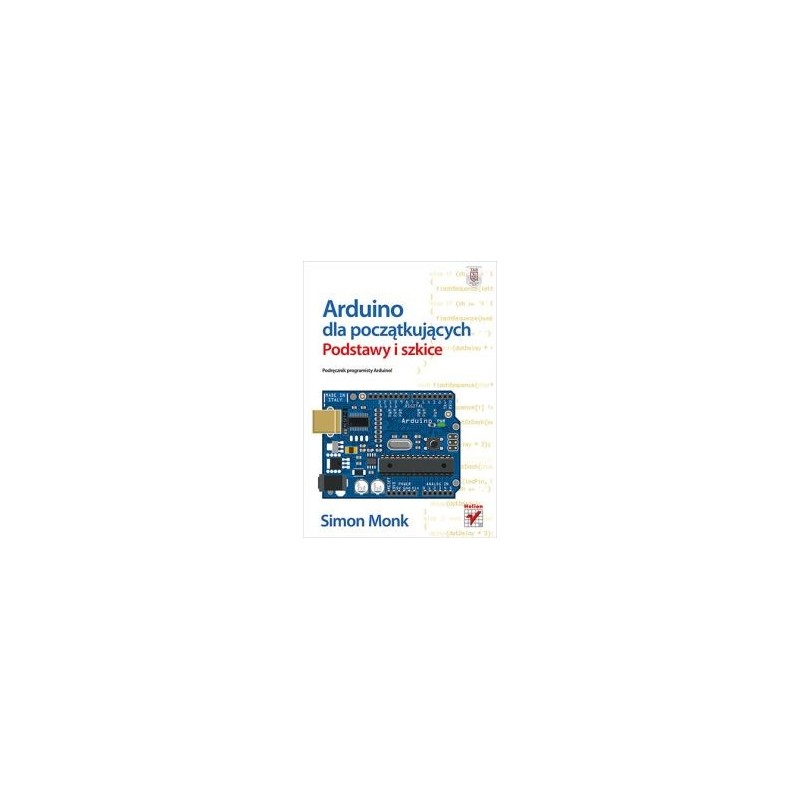- Out-of-Stock



Simon Monk
Arduino programmer's guide!
If you're not on the way with a soldering iron and etching tiles, and your passion is electronics, Arduino is the platform for you! Thanks to it, you will develop wings and realize your dream projects. The Arduino market success has certainly been supported by great documentation, extensive sources of information and an environment specifically designed to create software. Currently, thanks to this platform and additional accessories you can build virtually any project - no matter if it is a Geiger counter or LED lighting controller.
In this book, the main focus has been on aspects related to Arduino programming. During the reading you will learn the basics of C language, and besides, you will learn to use data structures and use the analog and digital connectors on the Arduino board. In addition, you will learn the capabilities of the standard Arduino library, ways to save the program and information display techniques on LCD screens. At the end you will learn how to connect the Arduino board to the network, and then program the Ethernet network application. This book is a great guide for all electronics enthusiasts who want to get to know the Arduino platform better.
Thanks to this book:
A must read for every student of the Arduino platform!
Table of Contents
About the author (9) Acknowledgments (10) Introduction (11)
Chapter 1. Here is Arduino (15)
Chapter 2. We start the adventure with Arduino (27)
Chapter 3. Fundamentals of the C language (35)
Chapter 4. Functions (53)
Chapter 5. Boards and Chains (67)
Chapter 6. Inputs and outputs (81)
Chapter 7. The Arduino standard library (97)
Chapter 8. Saving data (107)
Chapter 9. LCD displays (115)
Chapter 10. Programming the Ethernet network applications (121)
Chapter 11. C ++ and libraries (133)
Index (141)
No product available!
Infrared sensor that allows measurement of distances up to 15cm, has a built-in infrared illuminator, IR receiver and a perimeter of the received signal
No product available!
No product available!
The Murata LQM18DH6R8M70L is a high-quality 6.8 µH inductor supporting up to 330 mA current, ideal for compact applications such as DC/DC power supplies and mobile devices. It features low series resistance (ESR) and excellent stability for efficient operation, and its SMD 0603 package allows easy integration into modern electronics designs.
No product available!
No product available!
Wireless motion sensor, temperature (high accuracy) and humidity with built-in event memory (recorder)
No product available!
No product available!
Assembled 4-channel dimmer for network lighting. AVT5361 C
No product available!
Rechargeable NiMH Battery Pack: 6.0 V, 350 mAh, 3+2 2/3-AAA Cells, JR Connector
No product available!
No product available!
No product available!
No product available!
No product available!
No product available!
No product available!
ARK terminal connector spring 4-pin, pitch 3.5 mm, non-detachable.
No product available!

Simon Monk
